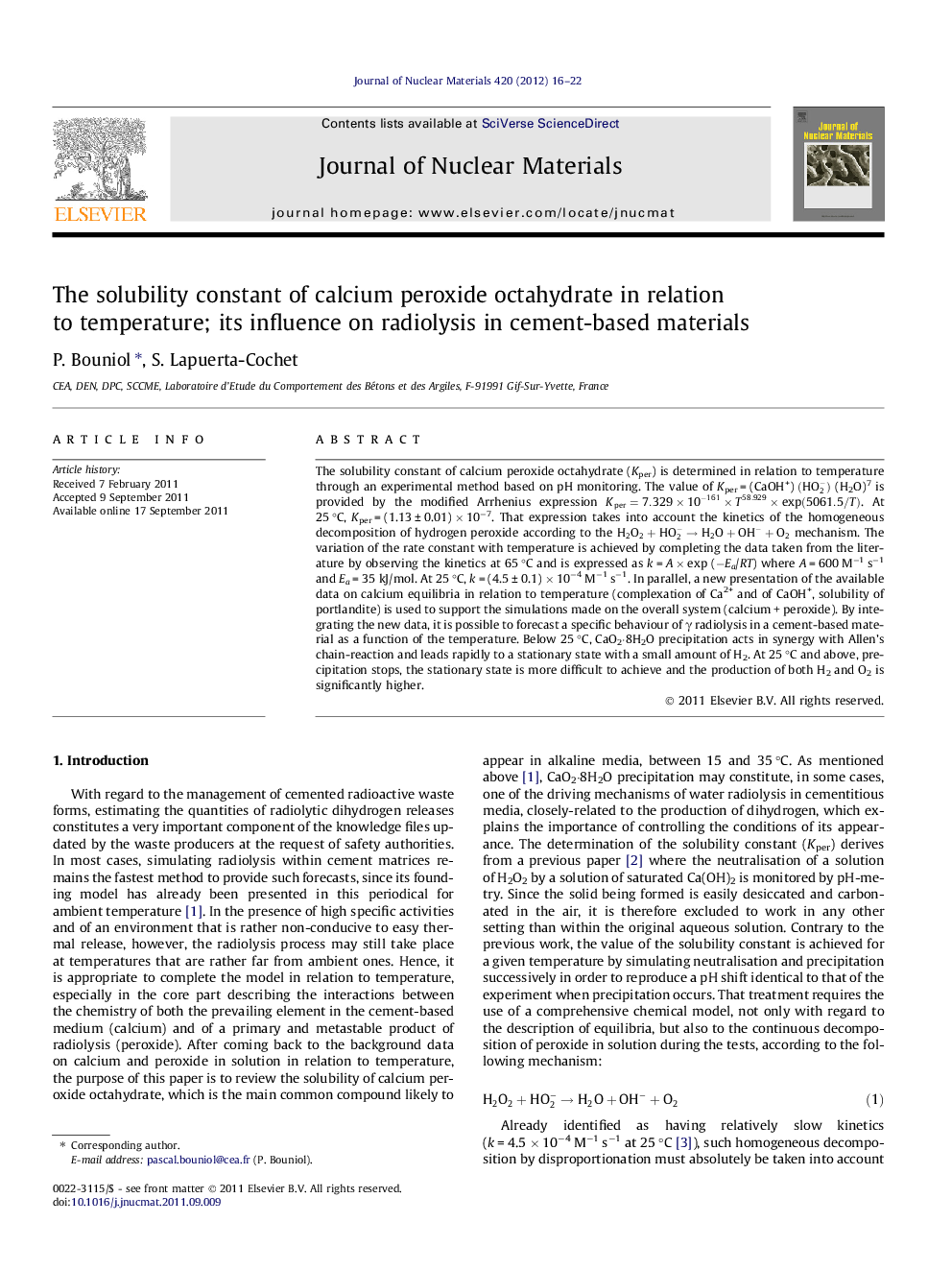| Article ID | Journal | Published Year | Pages | File Type |
|---|---|---|---|---|
| 1566433 | Journal of Nuclear Materials | 2012 | 7 Pages |
The solubility constant of calcium peroxide octahydrate (Kper) is determined in relation to temperature through an experimental method based on pH monitoring. The value of Kper = (CaOH+) (HO2-) (H2O)7 is provided by the modified Arrhenius expression Kper=7.329×10-161×T58.929×exp(5061.5/T)Kper=7.329×10-161×T58.929×exp(5061.5/T). At 25 °C, Kper = (1.13 ± 0.01) × 10−7. That expression takes into account the kinetics of the homogeneous decomposition of hydrogen peroxide according to the H2O2+HO2-→H2O+OH-+O2 mechanism. The variation of the rate constant with temperature is achieved by completing the data taken from the literature by observing the kinetics at 65 °C and is expressed as k = A × exp (−Ea/RT) where A = 600 M−1 s−1 and Ea = 35 kJ/mol. At 25 °C, k = (4.5 ± 0.1) × 10−4 M−1 s−1. In parallel, a new presentation of the available data on calcium equilibria in relation to temperature (complexation of Ca2+ and of CaOH+, solubility of portlandite) is used to support the simulations made on the overall system (calcium + peroxide). By integrating the new data, it is possible to forecast a specific behaviour of γ radiolysis in a cement-based material as a function of the temperature. Below 25 °C, CaO2·8H2O precipitation acts in synergy with Allen’s chain-reaction and leads rapidly to a stationary state with a small amount of H2. At 25 °C and above, precipitation stops, the stationary state is more difficult to achieve and the production of both H2 and O2 is significantly higher.
